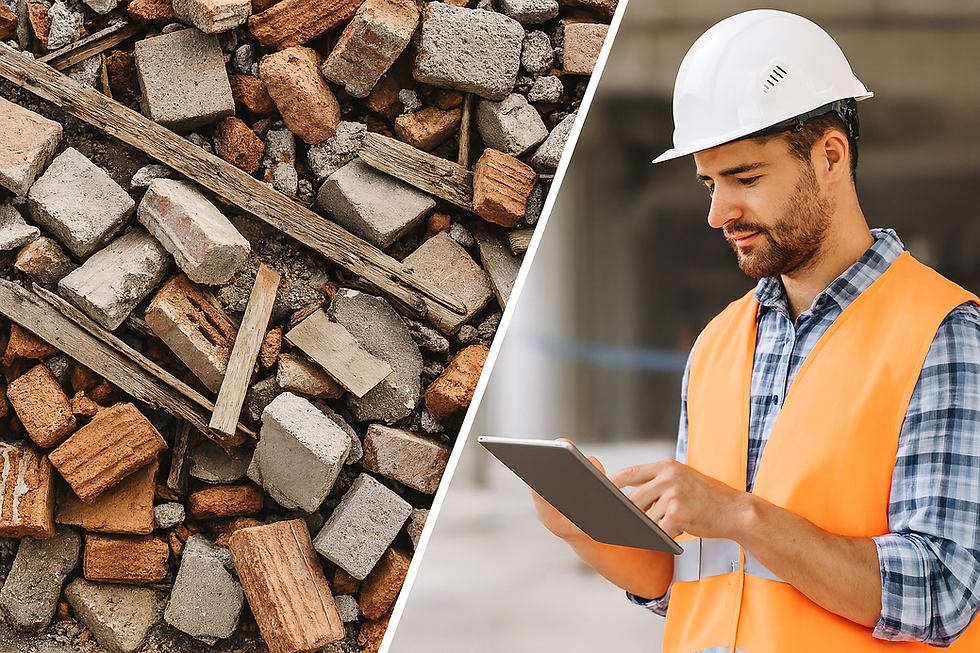Types of masonry Walls - Based on Materials Used
- Sq-Feet Construction Software
- Dec 31, 2022
- 2 min read
Masonry work is the basic process of binding individual units such as bricks, concrete blocks, or stones together with mortar. The activities include laying bricks or stones, the delivery and laying out the stone with mortar, etc. In this blog, we will be discussing different types of masonry work.
1. Brick masonry
The cement mortar in ratios of one part cement and six parts of sand for the brick masonry should be mixed properly. A layer of mortar should be laid evenly on the surface of the lower course. The courses of the brick shall be laid on the mortar line as directed by the Engineer. For all the brickwork, scaffolding should be provided and the joints should be filled with mortar. The brick-pointing work should also be carried out simultaneously with the laying of bricks. Masonry should be kept moist on all faces for a minimum period of 7 days. The materials, labor, and equipment shall be provided by the contractor for the completion of all brickwork.
Partition wall and Parapet wall
The mortar of one part cement and four parts of sand is to be prepared for the construction of the partition wall and parapet wall. Brick masonry of 100mm or 150 mm thick partition wall is to be laid below the ground level at a height. Scaffolding should be provided and the planks should rest in a hole provided in the header course. All face joints should be raked at the time of laying while the mortar is in moist condition. The brickwork should be reinforced with 2 number 8 mm diameter bars at every fourth layer. The wall should be cured with water and kept moist for at least 7 days.
2. Block masonry work
Block masonry work with Autoclave Aerated Concrete (AAC) Blocks of 200 mm thickness in 3mm to 5mm thick block jointing mortar of approved make should be constructed at all levels and depths. Before application of the mortar, the AAC blocks should be dipped in the water. Openings should be cut with a handsaw, if necessary. The first course of the AAC block should be laid and leveled. Curing is not required for ready-made jointing mortar.
3. Solid Concrete Blocks
A solid concrete block of 200 mm thickness in one part of cement and six parts of sand should be laid at all levels and depths. The concrete blocks should be laid in the mortar and thoroughly bedded in the mortar. The joints for plastering should be raked to a depth of 12 mm. The surface using solid concrete blocks should have a smooth finish with a layer of cement mortar.
4. Fly Ash Brick Masonry
These bricks can be manufactured at the site for economical production (no transportation and taxes). It's easy to chisel these bricks for laying services. Fly Ash bricks have a very high density (2100 to 2200 kg/cum) which increases the dead load of the structure.
Note
Holes for pockets in the brickwork for rainwater pipes and other pipes should be kept. Pipes should be provided at the time of masonry work.



Comments